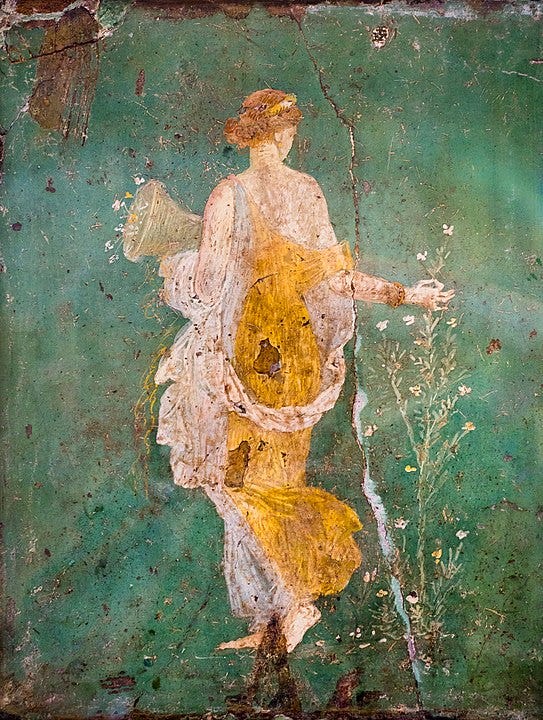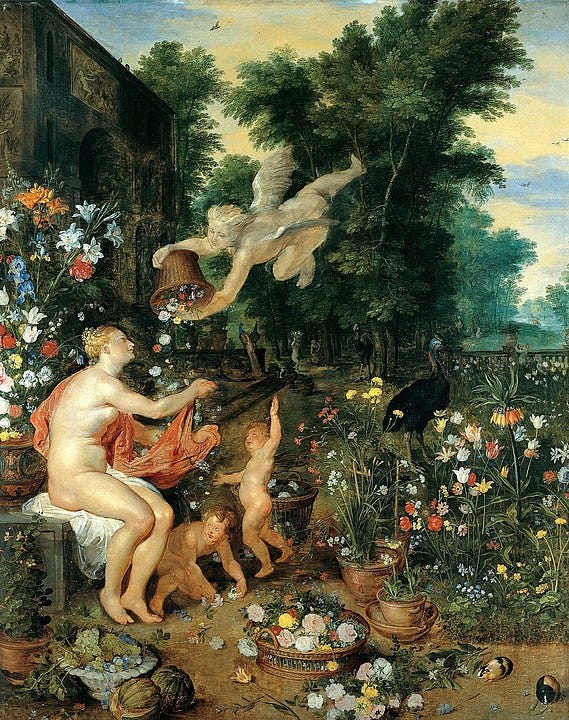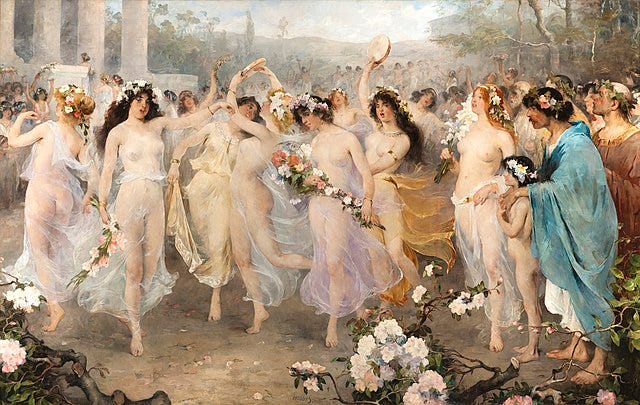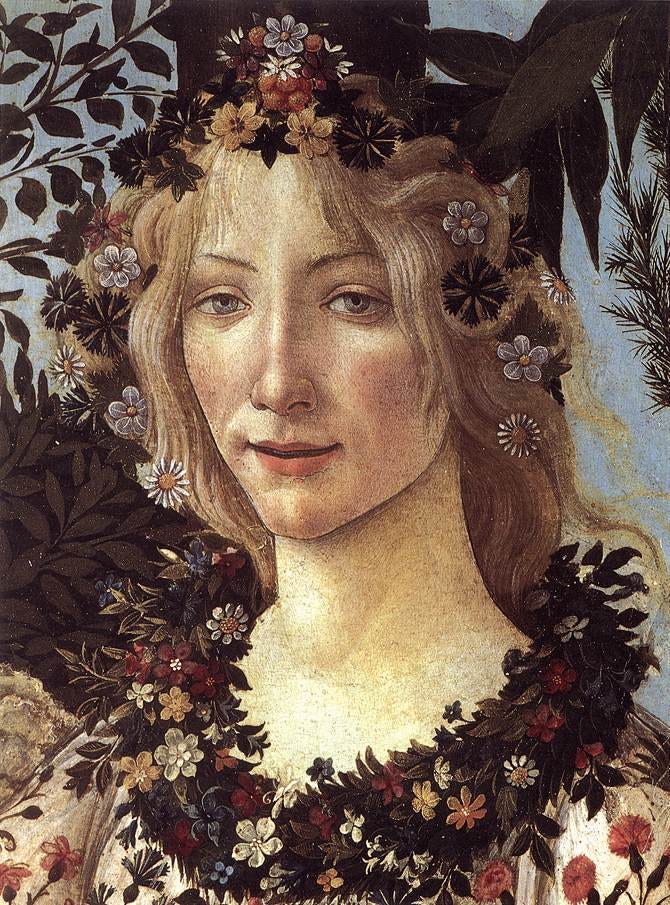Dear Classical Wisdom Reader,
Somehow, I’m both early and late with this one…
Last weekend here in Ireland it was Imbolc, the Celtic festival of Spring. I was delighted to see a news report from my erstwhile college town: there were parades, fire displays, and massive celebrations to mark the occasion.
It’s one of the most ancient and enduring of Irish celebrations, with roots going back centuries. The holiday was later Christianised and became St. Brigid’s Day.
Yet a funny thing happens now: in a more secular era, both the Christian and pagan celebrations have somewhat merged, with riotous Imbolc celebrations featuring prominent, striking St Brigid’s crosses.
So today we’re looking at something of a Roman equivalent to Imbolc, the Roman festival of Floralia. Naturally, it’s not exactly the same: for one thing, Floralia doesn’t happen until April by our calendar. Yet as a jubilant celebration of nature and the springtime, it is very much in the same spirit.
We’re also looking at the goddess behind it all - Flora, the goddess of spring. A colorful figure who has endured throughout the centuries, and one naturally beloved by artists.
So while I’m still not quite sure if I’m early or late here, maybe in the end it it doesn’t matter. As both Imbolc and Floralia show us, the cycle of nature remains unstoppable, and new life always comes round again.
All the best,
Sean Kelly
Managing Editor
Classical Wisdom
The Goddess of Spring - Flora and the Floralia
by Ed Whelan
She was an exceedingly popular Roman goddess.
There was a magnificent temple dedicated to her in the Circus Maximus, and many Roman coins showed her image. Every year a major festival, the Floralia, was held in her honor.
She was Flora, and she was regarded by the Romans as one of their most important goddesses. She played a crucial role in Roman religion, and was one of the few Roman divinities to have their own flamen (priests or priestesses).
But who was Flora? And what was her festival like?
The Goddess Flora
The name Flora ultimately derives from the Indo-European word for flower. It appears that the name Flora was a combination of ancient Latin and Oscan, a tongue native to southern Italy. There is also clear Greek influence in the development of this fertility deity. Some scholars believe that Flora’s true origin was as a very ancient Italian fertility goddess.
She was associated with vegetation and flowering plants, and the Romans honored her in order to ensure her continued blessing on their lands. This was, of course, crucial for an ancient people dependent on agriculture. Indeed, Flora was worshiped throughout the period of the Roman Republic and into the Roman Empire, up until the coming of Christianity.
Naturally, there are many myths about Flora. Most are recorded in the work of the first-century poet Ovid. One such tale is that she was originally a nymph who transformed into Flora after being kissed by Zephyrus, the God of the West Wind.
She was depicted as having the power to make both nature and humans more fertile : in another myth, she used a magical plant to help Juno become pregnant, in revenge for Jupiter giving birth to Minerva from his head. In other myths, the goddess Flora was also associated with Venus, the goddess of desire and love.
The Floralia
The festival of Floralia was established around 250 BC and soon became one of the most popular in the Roman calendar. The festival was a five-day affair that fell, in our calendar, in late April and lasted until May.
According to legend, the festival was first instituted on the advice of the Sibylline Books, which were considered prophetic. For the Romans, the festival symbolized the cycle of life, birth, and death. It honored Flora and was a time of dancing, gathering flowers and the wearing of colorful clothes.
The festival was also an occasion to hold public games, which were paid for from fines levied throughout the year. These games lasted six days, and like the festival, were administered by the Roman magistrate, the aedile.
The festival gained popularity, prompting Julius Caesar to proclaim the Floralia an official holiday. It is considered an important social event in ancient Roman society, as it fostered a sense of community and allowed people to enjoy themselves after the hardships of winter.
Generally, the Floralia opened with theatrical performances. These were often mimes, and could even include a naked actress. This was followed by the first day of the Games and at night, a ceremonial sacrifice to Flora. There were great efforts made to make the theatrical events around the festivities enjoyable, and in 69 AD a tightrope-walking elephant was part of the celebrations!
Centuries later, the legacy of Flora lives on. Some scholars believe that the Floralia was the inspiration for the May Day Festival, which is still popular in many Northern European countries. The goddess Flora was also reverenced by humanists in Renaissance Europe, who featured her in paintings, sculptures, and poetry. She has been painted by some of the greatest painters in the Western tradition, such as Botticelli and Poussin. In the modern world, her name is used as the botanical term flora and, of course, it is also a popular girl’s name.
So we hope that even now, as in ancient times, Flora and Floralia can still help people come together to celebrate the magnificence of nature and the joy of spring.









Wasn’t Flora Persephone to the Greeks?